Janice Lam
NLLB Team
SeamlessM4T-Massively Multilingual & Multimodal Machine Translation
Aug 23, 2023
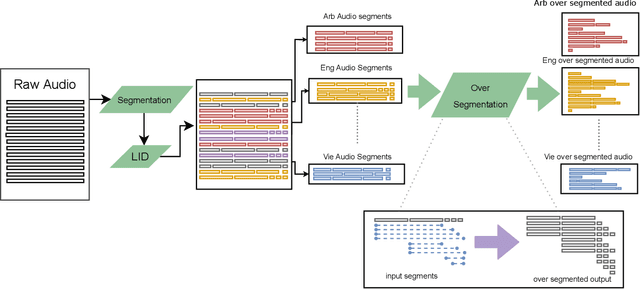
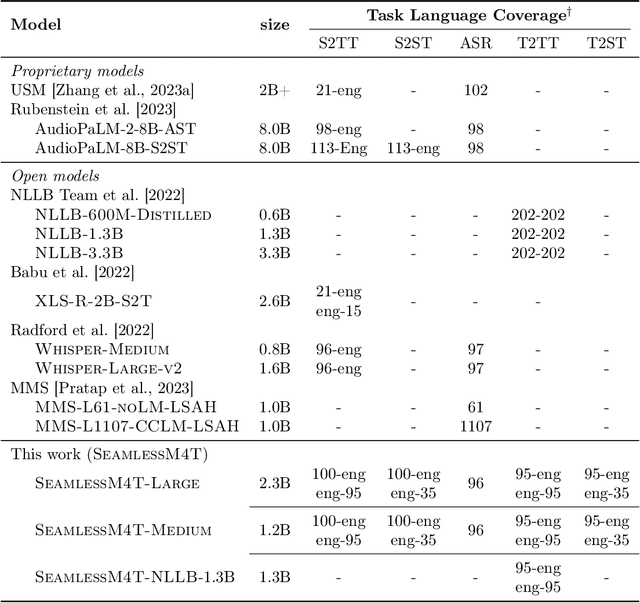
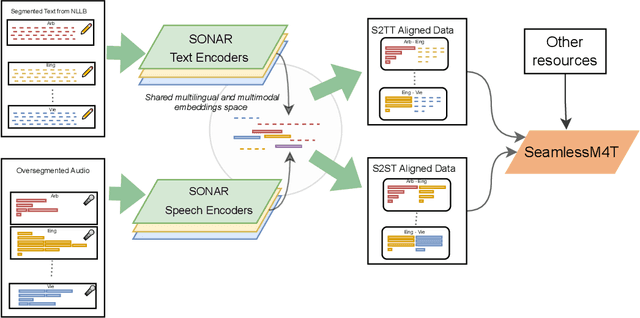
Abstract:What does it take to create the Babel Fish, a tool that can help individuals translate speech between any two languages? While recent breakthroughs in text-based models have pushed machine translation coverage beyond 200 languages, unified speech-to-speech translation models have yet to achieve similar strides. More specifically, conventional speech-to-speech translation systems rely on cascaded systems that perform translation progressively, putting high-performing unified systems out of reach. To address these gaps, we introduce SeamlessM4T, a single model that supports speech-to-speech translation, speech-to-text translation, text-to-speech translation, text-to-text translation, and automatic speech recognition for up to 100 languages. To build this, we used 1 million hours of open speech audio data to learn self-supervised speech representations with w2v-BERT 2.0. Subsequently, we created a multimodal corpus of automatically aligned speech translations. Filtered and combined with human-labeled and pseudo-labeled data, we developed the first multilingual system capable of translating from and into English for both speech and text. On FLEURS, SeamlessM4T sets a new standard for translations into multiple target languages, achieving an improvement of 20% BLEU over the previous SOTA in direct speech-to-text translation. Compared to strong cascaded models, SeamlessM4T improves the quality of into-English translation by 1.3 BLEU points in speech-to-text and by 2.6 ASR-BLEU points in speech-to-speech. Tested for robustness, our system performs better against background noises and speaker variations in speech-to-text tasks compared to the current SOTA model. Critically, we evaluated SeamlessM4T on gender bias and added toxicity to assess translation safety. Finally, all contributions in this work are open-sourced and accessible at https://github.com/facebookresearch/seamless_communication
HalOmi: A Manually Annotated Benchmark for Multilingual Hallucination and Omission Detection in Machine Translation
May 19, 2023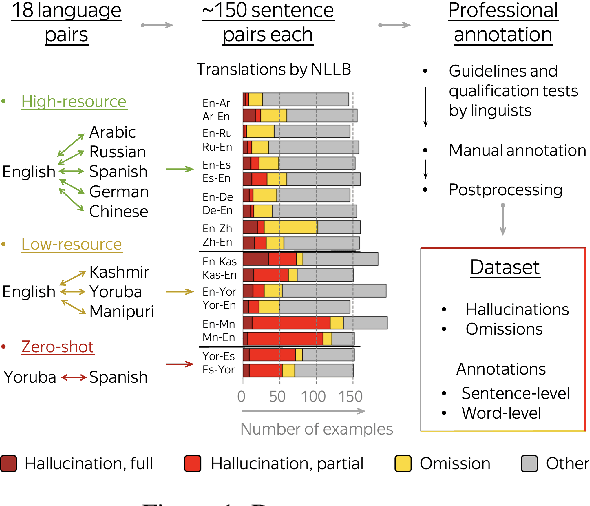
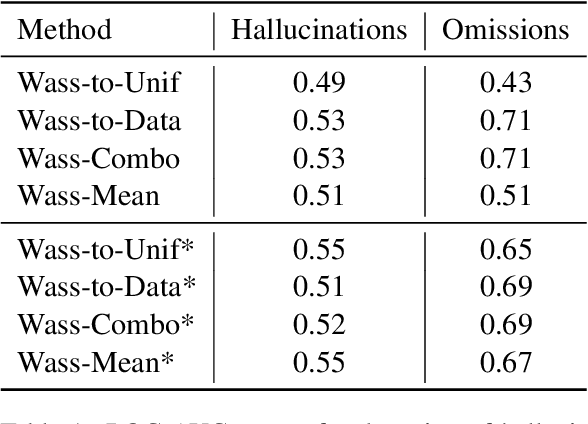

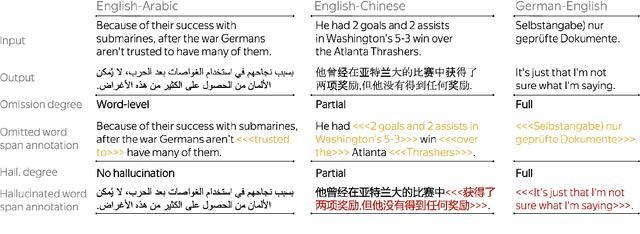
Abstract:Hallucinations in machine translation are translations that contain information completely unrelated to the input. Omissions are translations that do not include some of the input information. While both cases tend to be catastrophic errors undermining user trust, annotated data with these types of pathologies is extremely scarce and is limited to a few high-resource languages. In this work, we release an annotated dataset for the hallucination and omission phenomena covering 18 translation directions with varying resource levels and scripts. Our annotation covers different levels of partial and full hallucinations as well as omissions both at the sentence and at the word level. Additionally, we revisit previous methods for hallucination and omission detection, show that conclusions made based on a single language pair largely do not hold for a large-scale evaluation, and establish new solid baselines.
No Language Left Behind: Scaling Human-Centered Machine Translation
Jul 11, 2022
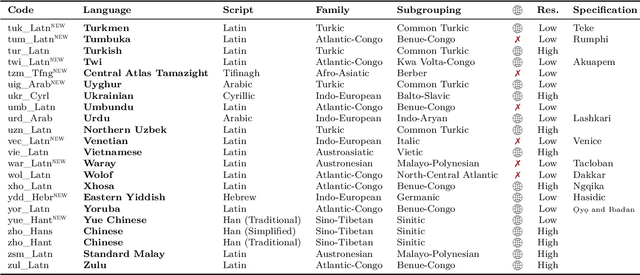
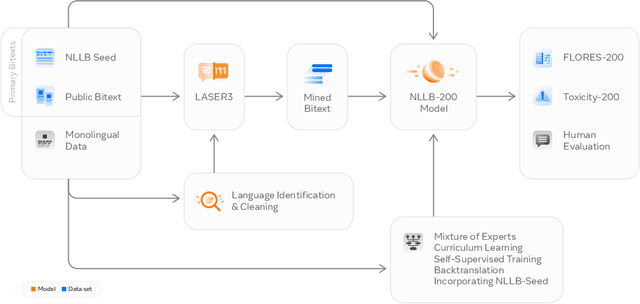

Abstract:Driven by the goal of eradicating language barriers on a global scale, machine translation has solidified itself as a key focus of artificial intelligence research today. However, such efforts have coalesced around a small subset of languages, leaving behind the vast majority of mostly low-resource languages. What does it take to break the 200 language barrier while ensuring safe, high quality results, all while keeping ethical considerations in mind? In No Language Left Behind, we took on this challenge by first contextualizing the need for low-resource language translation support through exploratory interviews with native speakers. Then, we created datasets and models aimed at narrowing the performance gap between low and high-resource languages. More specifically, we developed a conditional compute model based on Sparsely Gated Mixture of Experts that is trained on data obtained with novel and effective data mining techniques tailored for low-resource languages. We propose multiple architectural and training improvements to counteract overfitting while training on thousands of tasks. Critically, we evaluated the performance of over 40,000 different translation directions using a human-translated benchmark, Flores-200, and combined human evaluation with a novel toxicity benchmark covering all languages in Flores-200 to assess translation safety. Our model achieves an improvement of 44% BLEU relative to the previous state-of-the-art, laying important groundwork towards realizing a universal translation system. Finally, we open source all contributions described in this work, accessible at https://github.com/facebookresearch/fairseq/tree/nllb.
Consistent Human Evaluation of Machine Translation across Language Pairs
May 17, 2022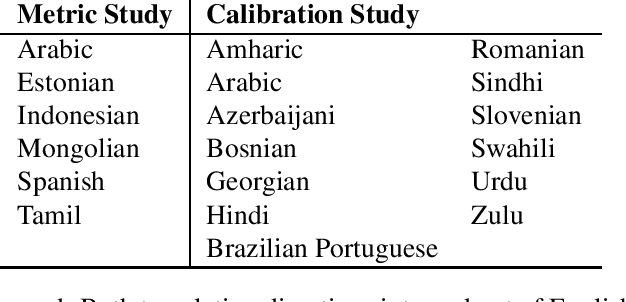

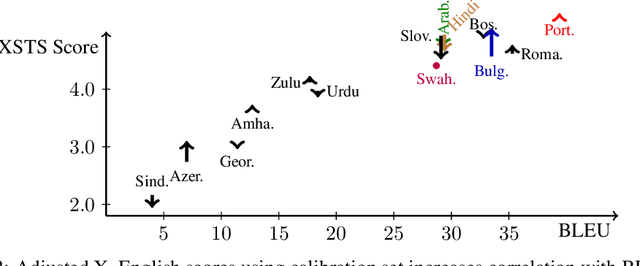
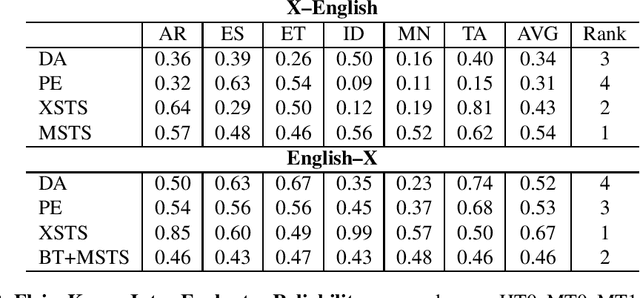
Abstract:Obtaining meaningful quality scores for machine translation systems through human evaluation remains a challenge given the high variability between human evaluators, partly due to subjective expectations for translation quality for different language pairs. We propose a new metric called XSTS that is more focused on semantic equivalence and a cross-lingual calibration method that enables more consistent assessment. We demonstrate the effectiveness of these novel contributions in large scale evaluation studies across up to 14 language pairs, with translation both into and out of English.
 Add to Chrome
Add to Chrome Add to Firefox
Add to Firefox Add to Edge
Add to Edge